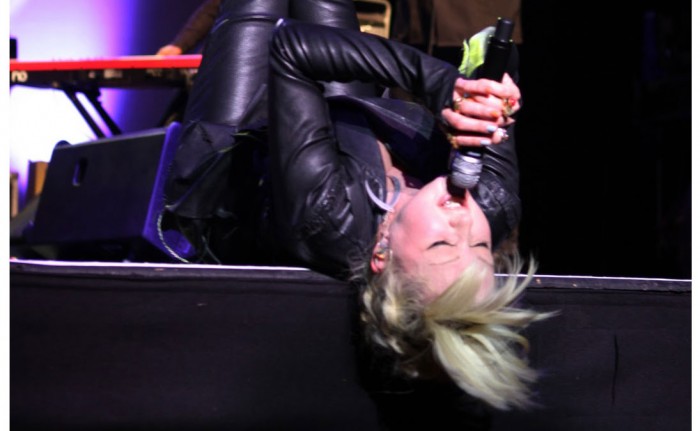Essential Microphone Technique
By Katie Green, Sono School Of Music
Microphones accomplish much more than amplifying sound to an audience. They colour a source of sound that is produced, which is determined by the way a singer uses the microphone. The techniques that singers use achieve some very different sounds in live performing. It is important to distinguish what techniques to use in different vocal situations.
Firstly, to sustain a comfortable performance, it is important to hold the microphone in a position that is fitting for you. For this result, simply hold the microphone comfortably halfway down in the palm of your hand with your fingers curled loosely around it. If you handle the microphone too close to the grill that you sing into, it can struggle to amplify sound when it has no where to go. If the microphone is held right at the end, it may feel heavy and unbalanced, which will cause discomfort when singing. While ensuring you have a firm grip on the microphone, holding it tightly may cause discomfort, especially if you have to hold it for a long period of time. Therefore, ensure you have a slightly loose but confident grip on the microphone.
Many beginner performers tend to unintentionally move away from the microphone while singing, which means that the sound is lost, and can therefore break the connection between you and the audience. Make sure that when you move around, the microphone stays directly in front of the mouth. The best position to hold it is at a 45 degree angle below your mouth so that a clear sound is passed through the microphone.
Cyndi Lauper. Upside-down, yet maintaining good microphone technique!
The distance between your mouth and the microphone varies between 1 and 10 centimetres, which is determined by different vocal situations. Particularly for louder singers, if the microphone is touching your lips, the sound may become too ‘boomy’, which is why you’ll need to pull the microphone slightly away from your mouth. A case where the microphone is brought very close to the source is called the proximity effect. A very good technique for more slow and soft singers is holding the microphone so that it is 1 to 3 centimetres away from your lips. However, for vocals with a much louder volume, it is best to keep it 4 or more centimetres away from your mouth, but not too far for the sound to disappear entirely. If you are singing a song where the dynamics change now and again, it is best to move the microphone further away from your mouth when you sing loudly or a in the case of a song that is faster. Using less proximity effect in this situation makes the lyrics sound much clearer when they’re fast moving. However, when the song is softer or is sung at a slower tempo, bring the microphone back in towards the mouth.
The range in which you sing will also determine the distance between your mouth and the microphone. When you are forced to push to reach a high note, pull the microphone away from your mouth so the sound does not explode into it. In order to distinguish lyrics, bring the microphone closer to the mouth when you are singing in the lower range of your voice. This is also because in most cases you are generally singing a lot quieter in your low register.
On a side note, it is also important to stay away from the front of house speakers if you are moving around in live performances, otherwise you may experience feedback problems. Try to keep a reasonable distance behind the speakers or to the side at most to avoid them feeding back during a performance.
Considering these fundamental microphone techniques will enhance your performance to both look and sound very professional.


